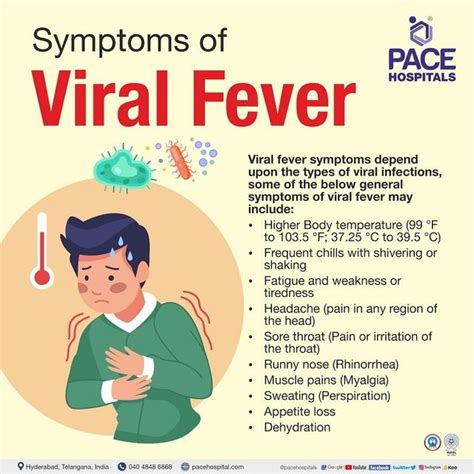Fevers are a common symptom of various illnesses, ranging from the flu to more severe infections. However, the question of whether fevers themselves are contagious is a bit more complex. To understand the relationship between fevers and contagion, it's essential to explore what causes fevers and how illnesses are transmitted. Fevers are typically a response by the body's immune system to an infection, which can be caused by a variety of pathogens, including viruses, bacteria, fungi, or parasites.
Understanding Fevers and Their Causes

A fever is not an illness in itself but a symptom that something is wrong within the body. The mechanism behind fever involves the hypothalamus, the part of the brain that acts as the body’s thermostat, resetting the body’s temperature set point higher than its normal level. This increase in body temperature is usually a sign that the body is fighting an infection. Given this context, the primary concern in terms of contagion is not the fever itself but the underlying cause of the fever.
Contagion and Fever
Most illnesses that cause fever are infectious, meaning they can be spread from person to person. However, the fever is merely a symptom and not the agent of contagion. For example, influenza (the flu) is highly contagious and can cause fever, but it’s the influenza virus that’s transmitted from person to person, not the fever itself. Similarly, bacterial infections like pneumonia can cause fever, but the mode of transmission is through the bacteria, not the fever.
| Pathogen Type | Example of Illness | Mode of Transmission |
|---|---|---|
| Viral | Influenza | Airborne transmission, contact with contaminated surfaces |
| Bacterial | Pneumonia | Direct contact with an infected person, airborne transmission |
| Fungal | Ringworm | Direct contact with an infected person or contaminated surface |

Key Points
- Fevers are symptoms, not illnesses, and are the body's response to infection.
- The contagion aspect is related to the underlying cause of the fever, such as a virus or bacteria.
- Understanding the mode of transmission for the specific pathogen is crucial for preventing the spread of illness.
- Practicing good hygiene, such as frequent hand washing and avoiding close contact with someone who is sick, can help prevent the transmission of many infectious illnesses.
- Fevers themselves are not contagious; it's the pathogens causing the fever that can be transmitted from person to person.
Preventing the Spread of Illness

Given that fevers are indicative of an underlying infection, the strategies for preventing the spread of illness focus on interrupting the transmission of the causative pathogens. This includes practices like regular hand washing, proper cough and sneeze etiquette, avoiding close contact with individuals who are sick, and ensuring that children and adults are up to date on recommended vaccinations.
Vaccinations and Prevention
Vaccinations play a critical role in preventing the spread of infectious diseases. By reducing the number of susceptible individuals in a population, vaccinations can help prevent outbreaks and eventually lead to the elimination of certain diseases. For example, vaccines against influenza and pneumococcal disease are crucial in preventing these illnesses, which often present with fever as a symptom.
In conclusion, while fevers themselves are not contagious, the illnesses that cause them can be. Understanding the cause of a fever and the mode of transmission of the underlying illness is essential for preventing the spread of infection. By practicing good hygiene, staying informed about vaccinations, and taking steps to prevent the transmission of pathogens, individuals can significantly reduce the risk of contracting and spreading illnesses that cause fever.
Can you catch a fever from someone else?
+No, you cannot catch a fever directly from someone else. However, you can catch the illness that’s causing the fever, such as the flu or a bacterial infection, through transmission of the pathogen.
How can I prevent the spread of illnesses that cause fever?
+To prevent the spread of illnesses, practice good hygiene, such as washing your hands frequently, avoid close contact with someone who is sick, and ensure you and your family are up to date on all recommended vaccinations.
Are all fevers contagious?
+No, not all fevers are contagious. The contagion aspect depends on the underlying cause of the fever. For example, a fever caused by a viral or bacterial infection can be contagious, but a fever caused by a non-infectious condition, such as heatstroke, is not.



